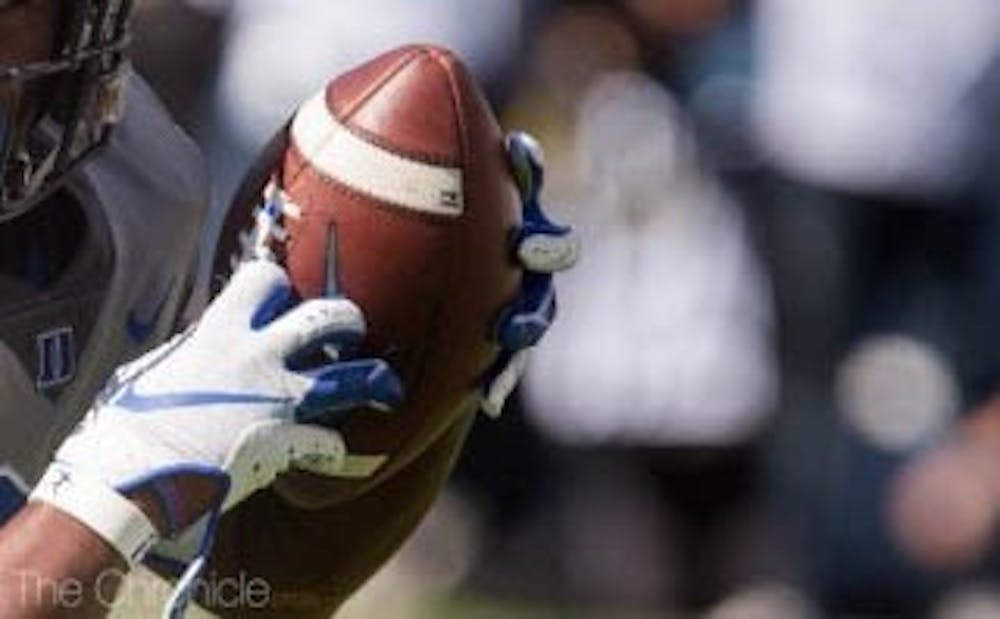High school football players may be putting more than just a college scholarship on the line when they step onto the field.
A study published in the November issue of Neurobiology of Disease indicates that playing one season of high school football leads to significant microstructural changes in the human brain—even without being diagnosed with a concussion. Using helmet accelerometers and MRI imaging, researchers from institutions including Duke, the University of California, Berkeley and University of North Carolina at Chapel Hill examined the structural changes in the brain that occurred during one season.
“We wanted to ask how long a person has to be in contact sports to see some sort of effect on the brain,” said Jeffrey Petrella, professor of radiology and one of the paper’s authors, said. “We took high school athletes because high school is an age when the brain is still developing and particularly vulnerable to trauma.”
Previous studies investigating football’s impact on the brain have focused on degenerative diseases those who have played football for extensive periods of time. A year ago, a group of researchers, including Petrella, began focusing on high school football.
In its first study in 2017, the team focused on the white matter of the brain—its wiring—and saw changes in a bundle of nerve fibers known as the fornix. This most recent study builds upon that previous work to examine the gray matter structures.
“We found that not only was the wiring of the brain affected, but also superficial parts of the brain—the gray matter—was as well,” Petrella said.
The white matter affected, the fornix, has implications for memory effects. The fornix is often vulnerable in high speed motor vehicle accidents, given its curved structure and the rotation of the head, Petrella said.
According to Petrella, the gray matter changes found in this study were localized to the frontal lobe and thalamus, which are responsible for higher order cognitive function, inhibition, sensory perception and memory. Petrella said this type of damage could lead to more impulsive behavior. For both gray and white matter changes, researchers saw a positive correlation between the number of hits taken by a player and the damage to the brain.
“Many NFL players describe changes in personality over time, characterized by more impulsivity,” Petrella explained. “This could be contributing to the biological basis underlying that increased impulsivity and loss of inhibition.”
Most of the high school students the researchers studied experienced only subconcussive hits. However, one student did experience a concussion near the end of the season. Petrella noted that the brain imaging results of this student allow for some optimism regarding structural changes caused by high school football.
“In the fornix, when the player was injured, there was evidence of loss of integrity,” he said. “When we re-scanned the player after a couple of months of rest, these changes had completely disappeared.”
Although Petrella acknowledged that this repair could be influenced by the plasticity of a younger brain, he also stressed the importance of rest and recovery. However, the reversibility of these changes may not extend to the lifetime of football experienced by professional players.
Some prior studies of football players focused on correlating concussions with brain damage. This study reflected the number of hits a player received, rather than the severity. Petrella described how the emphasis on subconcussive injuries in this study highlights the roles of an extensive range of player positions, including those who don't experience high velocity hits.
“We studied subconcussive injuries, and that’s a unique thing that we’re seeing here,” he said. “You have an uneventful season of high school football in which you don’t get a concussion, but you’re still seeing brain changes.”
Petrella said the researchers built on the experiences of co-author Samuel Kuzminski, who was a college football player himself. The study indicated that hits directly to the crown of the head had greater effect on the frontal lobe. Petrella said modifications to the way athletes are trained—including training to minimize hits to the crown—will help protect younger players whose brains are still developing.
“Even in high school football, which is not as violent a game as college or the pros, we need to be cognizant of safety,” he said. “We’re not saying high school football is unhealthy. It’s just a cautionary flag that coaches need to take more protective measures, teaching kids how to hit appropriately and not lead with the head.”
Get The Chronicle straight to your inbox
Sign up for our weekly newsletter. Cancel at any time.

